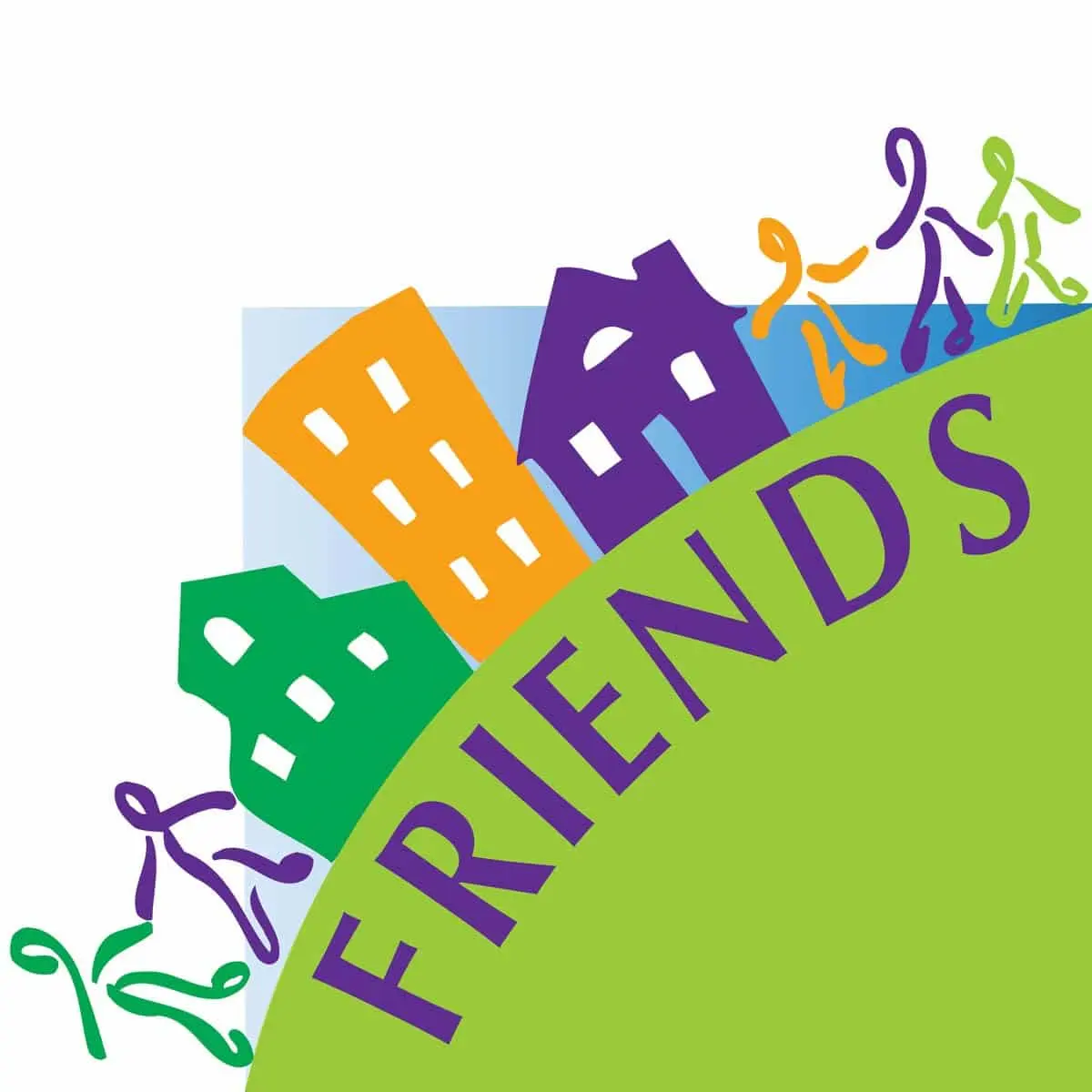Diverse Groups
Who will benefit from culturally responsive programs and services?
All members of a diverse society benefit from a greater understanding of varying cultures and learning to become more responsive to groups of people different from their own. While CBCAP funded-services are often targeted to the broad population, under-served and under-represented groups are a particular focus of limited resources. The annual CBCAP Program Instruction (PI) highlights certain populations for the focus of outreach and services. Please use the links below for more information about those groups identified in the PI:
A Word About Terminology

A parent is not only a child’s biological mother or father. The term can also refer to caregivers or guardians who are responsible for the care of a child. This includes mothers and fathers, brothers and sisters, grandparents, other relatives, or non-related caregivers. Parenting is often not performed by one individual only, but by several family members at once. 1
All parents, regardless of age, gender, race, ethnicity, or sexual orientation need access to resources and information to support the successful care and nurturing of their children. Families can be complex and take different forms. Parenting roles can also look different from family to family. While both mothers and fathers play distinctive roles in the lives of their children, there are also other primary caregivers that influence child nurturing, development, and well-being.
Special Parent Groups
New Parents
For new parents, getting to know and understand their little one is paramount. The first days and weeks of a newborn’s life are a time of great wonder and joy for most new parents. However, being responsible for such a seemingly fragile baby can be intimidating. New parents may be unfamiliar with how a newborn looks and behaves. This can create anxiety and even fear in some new parents who must learn to bond with their child, understand their primitive reflexes, know their newborn’s sleeping and breathing patterns, provide proper nutrition, and become familiar with their general health and development.2
 Teen Parents
Teen Parents
Teen parents face additional challenges. Before the birth, teenaged parents may begin to feel isolated from their peers, and frustrated by the many restrictions, particularly for the expectant teen mother, that a pregnancy imposes. 3 Risk factors for adolescent parents include: lack of life experience, lack of maturity, balancing their education with the need to parent and bond with their newborn, a higher potential for dropping out of school, lack of employment and other economic disadvantages, child care obstacles, and the need for additional emotional support.4
Parents in Our Communities
Consider the Data
- In 2020, the teen birth rate was 15.4 births for every 1,000 females aged 15-19, down eight percent from 2019 and down 75 percent from the 1991 peak of 61.8. Nine in ten (91.7 percent) of these births occurred outside of marriage.5
- Nearly 24 million children in the United States live in a single-parent family. This accounts for about one in every three children across America.6
- According to 2021 estimates, approximately 14.5 million children who live in single parent families live with their mothers and 3.5 million children live in father-only households.7
- Within single-parent families, approximately 6 million children live with cohabitating parents.8
- S. census data shows that 7.1 million American grandparents are living with grandchildren who are under the age of 18. Approximately 2.3 million grandparents are raising their grandchildren and a third of these grandchildren are younger than 6 years old.9
- Studies estimate that between 1 and 9 million children in the United States have at least one parent who is lesbian or gay. There are approximately 594,000 same-sex partner households, according to the 2000 Census, and there are children living in approximately 27 percent of those households.10
Creating Welcoming and Inclusive Spaces
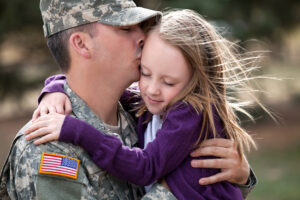 It is important to be intentional about creating environments that are welcoming to diverse family structures such as divorced or separated parents, single parents, and same sex parents.
It is important to be intentional about creating environments that are welcoming to diverse family structures such as divorced or separated parents, single parents, and same sex parents.
Ask parents what would make them feel comfortable in the spaces that programs are held. This might include visual images that reflect their family structure in brochures, room decorations, and outreach materials.
Consider providing services and programs at times and locations that are convenient for parents. This may be at times that are not typical office hours. Also remember to accommodate the unique abilities, communication and learning styles of diverse parents.
Evidence-Based Programs for Parents
Almost all child abuse prevention programs are focused on supporting parents and providing them with high quality educational information. A variety of clearinghouses and registries offer descriptions of programs and their level of evidence when using them with identified populations. FRIENDS offers a Crosswalk of Evidence-Based Programs:
https://friendsnrc.org/evaluation/evidence-based-practice/ebp-crosswalk/
The crosswalk is designed to help CBCAP State Lead Agencies and Tribal and Migrant CBCAP programs, as well as others, identify and assess family support and child abuse prevention programs. It is meant to be used as a starting point and is not an exhaustive list of available options. CBCAP programs should invest in programs and practices that are gathering evidence that they produce positive outcomes for children and families.
Additional Resources
Adoption
National Council for Adoption (NCFA)
https://adoptioncouncil.org/article/demographics-of-adoptive-parents/
The mission of the National Council for Adoption is to meet the diverse needs of children, birth parents, adopted individuals, adoptive families and all those touched by adoption through global advocacy, education, research, legislative action, and collaboration. This article describes the demographics of adoptive parents.
Foster Parents
The Annie E. Casey Foundation https://www.aecf.org/blog/resources-for-foster-parents
10 Resources for Foster Parents.
The Annie E. Casey Foundation (AECF®) is devoted to developing a brighter future for millions of children and young people with respect to their educational, economic, social and health outcomes.
Grandparents and Other Kinship Caregivers
Generations United- Grand Families https://www.gu.org/explore-our-topics/grandfamilies/
The mission of Generations United is to improve the lives of children, youth and older people through intergenerational collaboration, public policies, and programs for the enduring benefit of all. Their National Center on GrandFamilies is a source of information regarding policies and resources available for grandparents who are the primary caretakers of their grandchildren.
Grandfamilies.org https://www.grandfamilies.org
A national legal resource in support of grand families within and outside the child welfare system. Its mission is to educate individuals about state laws, legislation, and policy in support of grand families.
Grandfamilies & Kinship Support Network: A National Technical Assistance Center
This national technical assistance center helps government agencies and nonprofits in states, tribes, and territories work across jurisdictional and systemic boundaries to improve support and services for families where grandparents, other relatives or close family friends are raising children.
Child Welfare Information Gateway – Kinship Caregivers –
https://www.childwelfare.gov/topics/preventing/promoting/parenting/relative/
Resources for supporting kinship caregivers
New Parents
American Academy of Pediatrics website – www.healthychildren.org
HealthyChildren.org is a parenting website backed by 67,000 pediatricians committed to the attainment of optimal physical, mental, and social health and well-being for all infants, children, adolescents, and young adults.
Teen Parents
Helping Teen Parents and Their Children Build Healthy Futures
HealthyChildren.org is a parenting website backed by 67,000 pediatricians committed to the attainment of optimal physical, mental, and social health and well-being for all infants, children, adolescents, and young adults.
Office of Population Affairs (OPA) – Community Support for Young Parents (CYSP)
CSYP works to improve the health and well-being of expectant and parenting teens and young adults and their children, as well as young parents’ economic self-sufficiency.
Youth.gov – Expectant and Parenting Young Families
https://youth.gov/youth-topics/expectant-parenting-young-families
Resources on supporting pregnant and parenting teens.
Center for the Study of Social Policy – Youth Power, Parent Power
https://cssp.org/our-work/project/youth-power-parent-power/
The Youth Power, Parent Power initiative mobilizes the collective action of expectant and parenting young people, researchers, and youth serving professionals to promote equity and justice for all young people and young families.
Two-Generation Approaches
Urban Institute – HOST Initiative in Action Two-Generation Approach | Urban Institute
HOST uses a two-generation strategy to support and empower families living in public and subsidized housing. This whole-family wraparound approach combines intensive case management and supplemental support and services for adults and for children.
Endnotes
1“About UNICEF Parenting.” UNICEF, accessed November 29, 2023, https://www.unicef.org/parenting/about.
2“Getting to Know Your Newborn,” KidsHealth, last modified January 2023, accessed November 29, 2023, https://kidshealth.org/en/parents/newborn-variations.html.
3“Helping Teen Parents and Their Children Build Healthy Futures.” American Academy of Pediatrics, last accessed November 29, 2023. http://www.healthychildren.org/English/ages-stages/teen/dating-sex/Pages/TeenParents.aspx
4“Adolescent Health,” Office of Population Affairs, Accessed November 29, 2023. https://opa.hhs.gov/adolescent-health?adolescent-development/reproductive-health-and-teen-pregnancy/teen-pregnancy-and-childbearing/index.html.
5Office of Population Affairs, “Adolescent Health.”
6“Child Well-Being in Single-Parent Families.” The Annie E. Casey Foundation, June 23, 2023, https://www.aecf.org/blog/child-well-being-in-single-parent-families.
7The Annie E. Casey Foundation, “Child Well-Being.”
8The Annie E. Casey Foundation, “Child Well-Being.”
9“When Grandparents Are Called to Parent — Again,” AARP, accessed November 29, 2023, https://www.aarp.org/home-family/friends-family/info-2023/grandparents-become-parents-again.html#:~:text=U.S.%20census%20data%20shows%20that.
10“Same-Sex Parents and Their Children,” AAMFT, accessed November 29, 2023, https://www.aamft.org/Consumer_Updates/Same-sex_Parents_and_Their_Children.aspx#:~:text=Studies%20estimate%20that%20between%201.
A Word about Terminology
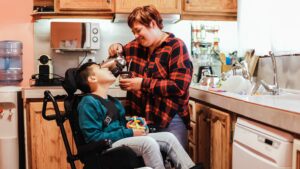 Note: Although CAPTA does not specifically define disability – it refers to the definition used in the Individuals with Disabilities in Education Act (IDEA Subpart B). All parents, including parents with disabilities and/or those parenting a child with a disability, can benefit from tangible resources and emotional support. People with disabilities come from every walk of life and experience a range of access to resources. The presence of a disability may exacerbate socioeconomic and racial disparities and other challenges a family may be facing. 1
Note: Although CAPTA does not specifically define disability – it refers to the definition used in the Individuals with Disabilities in Education Act (IDEA Subpart B). All parents, including parents with disabilities and/or those parenting a child with a disability, can benefit from tangible resources and emotional support. People with disabilities come from every walk of life and experience a range of access to resources. The presence of a disability may exacerbate socioeconomic and racial disparities and other challenges a family may be facing. 1
The Center for Disease Control and Prevention (CDC) offers helpful tips on using “person-first” language to communicate appropriately and respectfully with and about folks with a disability. 2
- Use language that emphasizes abilities, not limitations (a person who uses a wheelchair, not a person confined to wheelchair)
- Do not use language that suggests a lack of something (a person with cerebral palsy, not a cerebral palsy victim)
- Emphasize the need for accessibility, not the disability (accessible parking not handicapped parking)
- Do not use offensive language or language that implies negative stereotypes.
- Do not portray people as inspirational, only because of their disability.
“It is best to ask individuals how they want you to refer to (or not refer to) their disability. In addition, it is important to note that people may want different levels of disclosure. Some people may feel more comfortable discussing their disabilities than others or may feel differently about disclosure in different situations.” Adapted from Stanford Disability Language Guide, July 2019
People with Disabilities in Our Communities
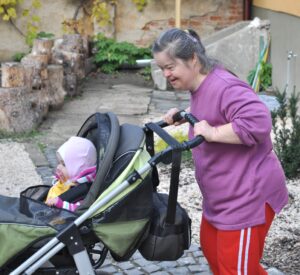 Consider the Data
Consider the Data
- Census reports show that over three million children (4.3% of the under-18 population) in the United States had a disability in 2019, up 0.4 percentage points since 2008.3
- In 2019, children living in poverty were more likely to have a disability (6.5%) than children living above the poverty threshold (3.8%).4
- Higher rates of childhood disability exist among American Indian and Alaskan Native (AIAN), Black children, and children of more than one race compared to Non-Hispanic White Children.5
- Current research reveals that there are 4.1 million parents with disabilities in the United States, roughly 6.2 percent of all American parents with children under the age of 18.6
- According to The American Community Survey, a program of the United States Census there are an estimated 1.2 million parents with independent living disabilities.7
Creating Welcoming and Inclusive Spaces
Parents with disabilities and their families continue to experience significant accessibility barriers. These barriers not only impede the abilities of these parents to fulfill their parenting responsibilities but also affect the entire family. As we engage parents in our community-based programming, how do we ensure a welcoming environment for families with disabilities? Learn more about some of the barriers parents face and some helpful strategies for practitioners working with parents with disabilities in the following resources:
- Rocking the Cradle: Ensuring the Rights of Parents with Disabilities and Their Children, National Council on Disability, 2012
- Advice for Professionals Working with Parents with Intellectual Disabilities: National Research Center for Parents with Disabilities
Prevention Strategies and Evidence-Based Resources
Many communities have initiatives to address the prevention of child maltreatment for children with disabilities. The Risk and Prevention of Maltreatment of Children with Disabilities bulletin includes risk and protective factors, state and community examples, evidence-based interventions, and additional resources to address prevention at various levels. The bulletin published by the Child Welfare Information Gateway includes the following prevention strategies focused on the community, family, and child levels.
- Community level prevention: Encourage communities to share the responsibility for the well-being of children with disabilities. Help develop leadership skills in parents and family members of children with disabilities so they can be advocates for promoting the safety of their children. Promote inclusion of parents or children with disabilities in everyday life.
- Family focused prevention: Ensure that parents have access to information about their child’s disability and community resources to help provide concrete and social support.
- Child focused prevention: Ensure culturally responsive and age-appropriate opportunities for teaching children how to protect themselves from potential abuse and respond by telling someone they trust about it.
The following are resources on research-based methods to support individuals and communities with disabilities.

- Welcome to the Center for Parents: National Research Center for Parents with Disabilities
- People With Disabilities Evidence-Based Resources
- Positive, Proactive Approaches to Supporting Children with Disabilities: A Guide for Stakeholders
- Parenting Tips and Strategies from Parents with Disabilities
- Your Action Planning Guide for Promoting Full Community Participation Among People with Disabilities
Additional Resources
The Arc: the largest national community-based organization advocating for and with people with intellectual and developmental disabilities (IDD) and serving them and their families. https://thearc.org/about-us/
The ARCH Respite Network: https://fcrinc.org/portfolio-items/arch-respite-network/
The mission of the ARCH National Respite Network and Resource Center is to assist and promote the development of quality respite and crisis care programs; to help families locate respite and crisis care services in their communities; and to serve as a strong voice for respite in all forums.
Child Welfare Information Gateway
The Risk and Prevention of Maltreatment of Children With Disabilities: Bulletin for Professionals 2018, Child Welfare Information Gateway, https://www.childwelfare.gov/pubPDFs/focus.pdf
National Research Center for Parents with Disabilities, The Heller School for Social Policy and Management, Brandies University: https://heller.brandeis.edu/parents-with-disabilities/index.html
The National Research Center for Parents with Disabilities is a collaborative research and advocacy project that aims to support parents with disabilities. They are housed at the Lurie Institute for Disability Policy at Brandeis University and collaborate with other institutions.
- Resources in Your State: https://heller.brandeis.edu/parents-with-disabilities/support/resources-by-state.html
Urban Institute. Families of Children with Disabilities Will Need Support beyond the Pandemic: https://www.urban.org/urban-wire/families-children-disabilities-will-need-support-beyond-pandemic, July 8, 2020. The Urban Institute is a nonprofit research organization that provides data and evidence to help advance upward mobility and equity.
U.S. Census Bureau. “Childhood Disability in the United States: 2019”. https://www.census.gov/library/publications/2021/acs/acsbr-006.html
The University of Washington, National Resources for Parents of Children and Youth with Disabilities Website (https://www.washington.edu/doit/Brochures/Parents/naparent.html)
End Notes
1“Financial Inequality: Disability, Race and Poverty in America.” National Disability Institute. February 2019. https://www.nationaldisabilityinstitute.org/wp-content/uploads/2019/02/disability-race-poverty-in-america.pdf
2“Communicating with and about People with Disabilities.” Centers for Disease Control and Prevention. February 1, 2022. https://www.cdc.gov/ncbddd/disabilityandhealth/materials/factsheets/fs-communicating-with-people
3“Childhood Disability Rate up in 2019 from 2008,” United States Census Bureau, March 25, 2021, htps://www.census.gov/library/stories/2021/03/united-states-childhood-disability-rate-up-in-2019-from-2008.html.
4US Census Bureau, “U.S. Childhood Disability Rate.”
5US Census Bureau, “U.S. Childhood Disability Rate.”
6National Council on Disability, “Rocking the Cradle: Ensuring the Rights of Parents with Disabilities and Their Children,” Brandeis University, September 27, 2012, https://heller.brandeis.edu/parents-with-disabilities/pdfs/rocking-the-cradle.pdf
7National Research Center for Parents with Disabilities, “Prevalence of Parents with Disabilities in the United States,” Brandeis University, August 2022, https://heller.brandeis.edu/parents-with-disabilities/data-hub/additional-resources/prevalence.html.
A Word About Terminology
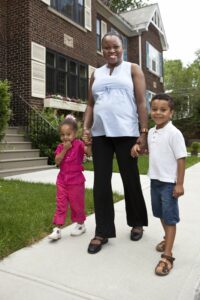 Race and ethnicity are difficult to define. The U.S. Census Bureau uses self-identification for calculating race and ethnicity with terms established by the Office of Management and Budget. Census respondents select the race or races with which they identify and indicate whether they are of Hispanic or Latino origin (the only categories offered for ethnicity).1 Some experts have traditionally provided definitions that use a more complex combination of biological, historical, and genetic references as well as social and cultural characteristics and attitudes. Many people associate race with biology and physical characteristics and ethnicity with culture.
Race and ethnicity are difficult to define. The U.S. Census Bureau uses self-identification for calculating race and ethnicity with terms established by the Office of Management and Budget. Census respondents select the race or races with which they identify and indicate whether they are of Hispanic or Latino origin (the only categories offered for ethnicity).1 Some experts have traditionally provided definitions that use a more complex combination of biological, historical, and genetic references as well as social and cultural characteristics and attitudes. Many people associate race with biology and physical characteristics and ethnicity with culture.
Race and ethnicity are now often described as a social construct. These are ideas that have been defined by society and are accepted by popular agreement. Paula Braveman and Parker Dominguez write in Abandon “Race”. Focus on Racism, “The concept of ‘race’ emerged in the 1600s with the trans-Atlantic slave trade, justifying slavery; it has been used to justify exploitation, denigration, and decimation.” Although scientists widely agree that race is a social construct, race is a term ingrained in most aspects of our culture and it supports ideas of inherent biological differences based on physical appearance.2
The American Psychological Association (APA) states, “Race is a socially defined concept sometimes used to designate a portion, or “subdivision,” of the human population with common physical characteristics, ancestry, or language. The term is also loosely applied to geographic, cultural, religious, or national groups. Self-reported race frequently varies owing to changing social contexts and an individual’s possible identification with more than one race. Ethnicity is social categorization based on an individual’s membership in or identification with a particular cultural or ethnic group.”3
It’s important to note that the terms African American and Black are often used interchangeably. According to Community Commons, an online platform that supports the advancement of equitable community health and well-being, “Black and African American are used to describe a diverse array of people. Racial and ethnic identities, and the language surrounding them are continuously evolving.”
Discrimination and Historical Trauma
Many groups have suffered from racial and ethnic discrimination and historical trauma, which correlate with rates of social, economic, and health problems experienced by members of these groups. Examples include disparate rates of poverty, unemployment, poor health outcomes and other conditions that lead to poor quality of life and even early death Discrimination refers to the differential treatment of racial, ethnic, religious, socioeconomic, and other groups at the individual level and the institutional/structural level.
 The Substance Abuse and Mental Health Services Administration’s (SAMHSA) GAINS Center for Behavioral Health and Justice Transformation describes historical trauma as cumulative and collective with the impact manifesting itself emotionally and psychologically. Those who have never experienced the traumatic stressor, such as children and descendants, can still exhibit signs and symptoms of trauma. Examples of events that caused historical trauma include slavery, the Holocaust, forced migration, and the colonization and forceful taking of lands from Native Americans.5
The Substance Abuse and Mental Health Services Administration’s (SAMHSA) GAINS Center for Behavioral Health and Justice Transformation describes historical trauma as cumulative and collective with the impact manifesting itself emotionally and psychologically. Those who have never experienced the traumatic stressor, such as children and descendants, can still exhibit signs and symptoms of trauma. Examples of events that caused historical trauma include slavery, the Holocaust, forced migration, and the colonization and forceful taking of lands from Native Americans.5
Many well-respected organizations have revisited their practices, policies, and views regarding race and ethnicity in recent years. The APA Council of Representatives adopted a resolution in October 2021 apologizing to “people of color for APA’s role in promoting, perpetuating, and failing to challenge racism, racial discrimination, and human hierarchy in [the] U.S.”4 The resolution includes specific language regarding wrongs the APA feels it committed and actions that will be taken in the future to improve.
Racial and Ethnic Diversity in Our Communities
Consider the data:
The overall racial and ethnic diversity of the country has changed since 2010, according to the 2020 U.S. Census. The most prevalent racial or ethnic group for the United States is White, non-Hispanic at 57.8%. This decreased from 63.7% in 2010.6 According to the Census, Latino or Hispanic residents comprise 18.7% of the population, and Black and Asian American or Native Hawaiian/Pacific Islander are 12.1% and 6.1%. American Indian and Alaska Natives, people of two or more races, and other races comprise the remaining 5%. Latino or Hispanic and Asian Americans are the fastest-growing racial and ethnic groups nationally, increasing by 23% and 35.6%, respectively, from 2010 to 2020.7
The racial and ethnic composition of the Nation’s children continues to change. In 2022, 49% of U.S. children were White, non-Hispanic; 26% were Hispanic; 14% were Black, non-Hispanic; 6% were Asian, non-Hispanic; and 6% were non-Hispanic-all other races. The percentage of children who are Hispanic has grown substantially, increasing from 9% of the child population in 1980 to 26% in 2022.8
Creating Welcoming and Inclusive Spaces
 It is important to address implicit bias and racial and ethnic disproportionality as we work to provide equitable and inclusive practices, opportunities, and welcoming spaces. According to the American Psychological Association (APA), “implicit bias is a negative attitude, of which one is not consciously aware, against a specific social group. Implicit bias is thought to be shaped by experience and based on learned associations between particular qualities and social categories, including race and/or gender.”
It is important to address implicit bias and racial and ethnic disproportionality as we work to provide equitable and inclusive practices, opportunities, and welcoming spaces. According to the American Psychological Association (APA), “implicit bias is a negative attitude, of which one is not consciously aware, against a specific social group. Implicit bias is thought to be shaped by experience and based on learned associations between particular qualities and social categories, including race and/or gender.”
Disproproportionality is the overrepresentation or underrepresentation of a racial or ethnic group compared with its percentage in the total population. (U.S. Department of Health and Human Services 2021)
The CBCAP Program is designed to foster understanding, appreciation, and knowledge of diverse populations to effectively prevent and treat child abuse and neglect (CBCAP Program Instruction). Addressing the unique needs of families is critical to the success of community-based programs which includes providing formal and informal resources to support families, providing inviting and accessible environments for services, and hiring staff that is culturally responsive to the needs of program participants.9
The American Planning Association identifies four steps for creating inclusive, anti-racist spaces. The Association recommendations include carefully selecting locations – is the service or space located in an area that is accessible to those being served; developing comfortable spaces where interaction is built into the environment; facilitating conversations across all channels, both digitally and physically and engaging the community in planning, programming, and partnerships.10
Prevention Strategies and Evidence-Based Practices
CBCAP funds programs that are designed for families from diverse groups. Examples of programs that have been developed specifically for Native American, African American, and Latino families are described below.
Positive Indian Parenting, an 8–10-week curriculum, developed by the National Indian Child Welfare Association, that provides practical and culturally specific training for American Indian and Alaska Native parents. The class provides a brief, practical, culturally specific training program to explore the values and attitudes expressed in traditional Native American child-rearing practices and applies these values to modern skills in parenting.11
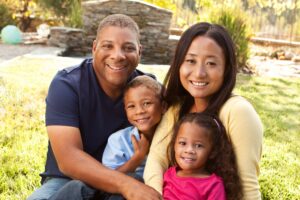 The Effective Black Parenting Program (EBPP) was the first culturally adapted group-based parenting skill-building program for parents of African American children aged 17 and younger. The program’s goals include promoting family unity and pride and helping families deal with racism. The program utilizes culturally sensitive approaches and teaches culturally specific parenting strategies for Black and African American parents, such as positive communication about heritage and using African American language expressions and African proverbs to illustrate the cultural roots of the program’s content.12
The Effective Black Parenting Program (EBPP) was the first culturally adapted group-based parenting skill-building program for parents of African American children aged 17 and younger. The program’s goals include promoting family unity and pride and helping families deal with racism. The program utilizes culturally sensitive approaches and teaches culturally specific parenting strategies for Black and African American parents, such as positive communication about heritage and using African American language expressions and African proverbs to illustrate the cultural roots of the program’s content.12
The University of Georgia’s Center for Family Research has developed a more targeted evidence-based program for rural African American families with adolescent and teenaged youth. The Strong African American Families (SAAF) Program is a 7-session program designed for youth aged 10–14 and their caregivers, while SAAF-Teen was developed to address the disproportionate burden African American teens (14-16) experience from involvement with risky behaviors. The goal of SAAF is to build on the strengths of African American families and support parents and youth during the transition from early adolescence to the teen years with a specific emphasis on helping young people avoid risky and dangerous behaviors. SAAF-T aims to build on the strengths of African American families to promote positive development throughout the teenage years by focusing on reducing risks that can get in the way of positive development.13
In Washington, the Yakima Valley Farm Workers Clinic (YVFWC) offers culturally specific parent education as part of their health care coordinated care system. A promising practice, Los Niños Bien Educados is a 12-session program, offered in Spanish, that helps parents teach their children to be respectful of others and believe in themselves. Programmatic goals include increasing family and community protective factors and resilience and demonstrating the benefits of collaboration among child abuse and neglect prevention programming, early learning programming, and youth delinquency and gang prevention programming. For more information visit: https://friendsnrc.org/cbcap/tribal-and-migrant-grantees/
Additional Resources
Child Trends
Child Trends promotes the well-being of all children and youth through applied research that informs public policy, builds the evidence base for what works and mines data to identify young people who are overlooked or ill served by public systems.
- Black Children & Families Reimagining Black Families’ Cultural Assets Can Inform Policies and Practices That Enhance Their Well-being
- Hispanic Children & Families https://www.childtrends.org/research-topic/hispanic-children-families
- Indigenous Children & Families Indigenous Children & Families Archives
Child Welfare Information Gateway
The Child Welfare Information Gateway provides trusted resources on the child welfare continuum. CWIG provides publications, research, and learning tools selected by experts to support thriving children, youth, families, and communities.
- Cultural Responsiveness: Child Abuse and Neglect – Administration for Children and Families: https://www.childwelfare.gov/topics/systemwide/cultural/can/
- Diverse Populations and Communities https://www.childwelfare.gov/topics/systemwide/diverse-populations/racialequity-systems/
- Equity & Inclusion When Preventing Child Abuse and Neglect https://www.childwelfare.gov/topics/preventing/promoting/equity/
- Racial Disproportionality in Child Welfare Child Welfare Practice to Address Racial Disproportionality and Disparity
FRIENDS National Center for Community-Based Child Abuse (CBCAP)
FRIENDS seeks to effectively support CBCAP lead agencies and other organizations to meet their responsibility to promote optimal outcomes for all children and families and this includes ensuring services are culturally appropriate and prioritize equity.
- Culturally Effective Organizations: Learn more about the 7 elements of the Framework for Culturally Effective Organizations. https://friendsnrc.org/prevention/cultural-effectiveness/
- Historical Trauma Among African Americans – Podcasts https://friendsnrc.org/friends-resources/historical-trauma-among-african-americans/
Cultural Humility Practice Principles – National Child Welfare Workforce Institute (NCWWI)
The purpose of NCWWI is to develop and support a child welfare workforce that can equitably meet the needs of the most vulnerable children and families.
Culturally Responsive Child Welfare Practice (CW360) – Center for Advanced Studies in Child Welfare (CASCW) https://cascw.umn.edu/portfolio-items/winter-2015-cw360/
The mission of CASCW is to improve the well-being of children and families who are involved in the child welfare system by educating human services professionals and fostering collaboration across systems and disciplines.
U.S. Office of Minority Health (OMH)
The mission of the Office of Minority Health is to improve the health of racial and ethnic minority populations through the development of health policies and programs that will help eliminate health disparities.
End Notes
1U.S. Census Bureau. Accessed January 19, 2024, https://www.census.gov/topics/population/race/about.html.
2Paula Braveman and Parker Dominquez, “Abandon Race. Focus on Racism,” Frontiers in Public Health, published September 7,2021. Accessed January 22, 2024, https://www.ncbi.nlm.nih.gov/pmc/articles/PMC8452910/
3“About the Topic of Race,” US Census Bureau, accessed January 19, 2024, https://www.census.gov/topics/population/race/about.html.
4“Trauma” Administration for Children and Families, accessed November 29, 2023, https://www.acf.hhs.gov/trauma-toolkit/trauma-concept.
5Resolution adopted by the APA Council of Representatives on October 29, 2021, American Psychological Association, accessed January 22, 2024, https://www.apa.org/about/policy/racism-apology.
6Eric Jensen, Nicholas Jones, Megan Rabe, Beverly Pratt, Lauren Medina, Kimberly Orozco and Lindsay Spell, “The Chance That Two People Chosen at Random Are of Different Race or Ethnicity Groups Has Increased Since 2010,” US Census, last modified August 12, 2021, accessed November 29, 2023, https://www.census.gov/library/stories/2021/08/2020-united-states-population-more-racially-ethnically-diverse-than-2010.html.
7William Frey, “Mapping America’s Diversity with the 2020 Census,” last modified September 21, 2021, accessed November 29, 2023, https://www.brookings.edu/articles/mapping-americas-diversity-with-the-2020-census/.
8“America’s Children: Key National Indicators of Well-Being, 2023,” ChildStats, accessed November 29, 2023, https://www.childstats.gov/americaschildren/demo.asp.
9“Culturally Effective Organizations,” Friends NRC,” Friends NRC, accessed November 29, 2023, https://friendsnrc.org/prevention/cultural-effectiveness/.
10“Four Steps to Creating Inclusive Anti-Racist Third Spaces: Help community connections to flourish,” American Planning Association, accessed January 19, 2024, https://www.planning.org/planning/2020/dec/tools-how-to/.
11“NICWA Positive Indian Parenting,” Tribal Access to Justice Innovation, accessed November 29, 2023, https://tribaljustice.org/places/child-welfare-crimes-against-children/nicwa-positive-indian-parenting/.
12“DCCTF’s Effective Black Parenting Program,” California Evidence-Based Clearinghouse, last modified September 2023, accessed November 29, 2023, https://www.cebc4cw.org/program/effective-black-parenting-program/detailed.
13“The Strong African American Families Program,” Center for Family Research, University of Georgia, accessed November 29, 2023, https://cfr.uga.edu/saaf-programs/saaf/.
A Word about Terminology
What is Father Engagement?
“The purposeful inclusion of fathers in human services programs with the goal of improving outcomes for fathers, children, and families. Fathers can be biological, social, or legal. They may live in the same household or live apart from one or more of their kids.”1
This page uses the term father, to include male caregivers in various roles, including grandfathers, stepfathers, and other titles used for males that are focused on providing positive care and support of a child or children.
A father’s active involvement with their child can have a positive impact on the child’s social, emotional, and cognitive development. Children who grow up with their fathers or who experience social and emotional support from positive male role models tend to do better in several areas, including:
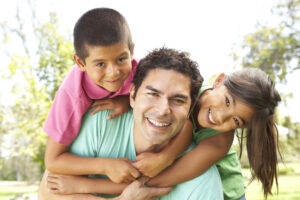
- better cognitive outcomes, even as infants
- higher self-esteem and less depression as teenagers
- higher grades, test scores, and overall academic achievement
- higher levels of empathy and other pro-social behavior
They are also at lower risk for poor childhood outcomes such as:
- neglect and abuse
- incarceration as juveniles
- drug and alcohol abuse
- suicide 2,3,4
Fathers in Our Communities
Consider the Data
“The proportion of children growing up with a resident dad is at the highest since 1989. Slightly more than three-quarters of children today (75.9%), or 54.5 million of our nation’s 72.3 million, can count a resident dad as a housemate.”5
The U.S. Census also indicates, 18.4 million, 1 in 4 children lived in a home without a biological, step, or adoptive father. 6 “The number of single fathers in the United States grew from approximately 1.7 million in 1990 to 3.3 million in 2020”.7
Creating Father-Friendly Environments
Child-serving systems do well when they intentionally focus on the engagement of fathers in planning and implementation strategies. It is important for the prevention community to work collaboratively with diverse groups of fathers to promote culturally appropriate and father friendly strategies that support family and community well-being.
Here are a few tips to consider when creating a father friendly environment in your organization and programs:

- Provide training to staff on building positive rapport and relationships with fathers.
- Create a father-friendly physical environment (pictures of diverse fathers as part of décor, reading material).
- Plan and provide program services at convenient hours for fathers.
- Host group activities for fathers and their children.
Resources that provide additional information on creating welcoming environments:
- National Fatherhood Initiative: The ABC’s of a Father-Friendly Program
- National Responsible Fatherhood Clearinghouse: Tip Card for Fatherhood Practitioners: Program Attendance and Retention
Prevention Strategies and Evidence-Based Programs
There are a wide variety of strategies and resources to support fatherhood initiatives and interventions in prevention and family strengthening environments, including the two toolkits below:
- The National Responsible Fatherhood Clearinghouse’s Responsible Fatherhood Toolkit offers a framework and activities for building and sustaining responsible fatherhood programs, including special topics such as fathers of children with special needs, fatherhood issues in the context of the child welfare system, cultural responsiveness, non-residential fathers, young fathers, and fathers navigating incarceration and re-entry.
- The Father Friendliness Organizational Self-Assessment and Planning Tool, developed by The National Center for Strategic Nonprofit Planning and Community Leadership (NPCL) in partnership with The National Head Start Association (NHSA), can help family service programs assess their organization’s readiness to provide services to fathers and father figures.
In addition, identifying dedicated staff for your fatherhood engagement planning is key. According to research, “Hiring staff who can build rapport with fathers and develop ongoing relationships of trust and commitment” is key to helping with recruitment and retention efforts.8 Many fatherhood programs have had success in hiring fathers or males from the local community which can lead to positive recruitment of participants and the overall success of fatherhood programs.
Additional Resources
Birth to 5 Father Engagement Guide
U.S. Department of Health & Human Services, Administration for Children & Families, ECLKC https://eclkc.ohs.acf.hhs.gov/family-engagement/birth-5-father-engagement-guide/creating-father-friendly-environments-early-childhood-programs
Child Welfare Information Gateway – Engaging Fathers page
https://www.childwelfare.gov/topics/preventing/promoting/fatherhood/community/
How Can We Better Engage Fathers in Prevention?
Casey Family Programs, Strong Families. Issue Brief – February 2019 https://www.casey.org/media/SF_Engaging-Fathers-Prevention.pdf
Fathers Incorporated
Established in 2004, Fathers Incorporated (FI) has a unique seat at the national table, working with leaders in the White House, Congress, U.S. Department of Health & Human Services, Family Law, Business, Faith-Based and the Responsible Fatherhood Movement. FI works to change the current societal and cultural definition of family to be inclusive of fathers. FI works collaboratively with organizations around the country to identify and advocate for social and legislative changes that lead to healthy father involvement with children, regardless of the father’s marital or economic status, or geographic location. https://fathersincorporated.com/
National Fatherhood Initiative
A leading provider of research on father presence and father involvement, research and evidence-based fatherhood programs and resources, staff training, and father-engagement planning services for human service organizations and practitioners. https://www.fatherhood.org/
National Responsible Fatherhood Clearinghouse
The Clearinghouse is an Office of Family Assistance (OFA) funded national resource under the USDHHS for fathers, practitioners, programs/Federal grantees, states, and the public-at-large who are serving or interested in supporting strong fathers and families. The Clearinghouse goals include disseminating current research and proven strategies with dads, researchers, policymakers, and other stakeholders. The website includes tips for dads, fatherhood programs, and a library with resources on responsible fatherhood. https://www.fatherhood.gov/
Endnotes
1“Father Presence,” National Responsible Fatherhood Clearinghouse, accessed February 13, 2024 https://www.fatherhood.gov/for-dads/father-presence.
2 “Involved Fathers Play An Important Role In Children’s Lives,” Institute for Research on Poverty, February 2020, https://www.irp.wisc.edu/resource/involved-fathers-play-an-important-role-in-childrens-lives/.
3 “A Father’s Impact on Child Development,” Children’s Bureau, May 12, 2023, https://www.all4kids.org/news/blog/a-fathers-impact-on-child-development/.
4“What is Father Engagement?,” Mathematica, accessed January 26, 2024, https://www.mathematica.org/publications/what-is-father-engagement-infographic.
5 Christopher A. Brown, “Proportion of Children Living with Resident Dads at 34-Year High,” National Fatherhood Initiative, accessed February 2, 2024, https://www.fatherhood.org/championing-fatherhood/proportion-of-children-living-with-resident-dads-at-34-year-high.
6 Stacey L. Shipe, PhD, MSc, Lynsay Ayer, PhD, and Kate Guastaferro, PhD, MPH, “American Single Father Homes: A Growing Public Health Priority” Am J Public Health, 11, no 1 (January 2022): 21-23, accessed February 2, 2024, 112(1): 21–23, doi: 10.2105/AJPH.2021.306591.
7“Statistics Tell the Story: Fathers Matter,” National Fatherhood Initiative, accessed February 2, 2024, https://www.fatherhood.org/father-absence-statistic .
8 “Program Attendance and Retention,” National Responsible Fatherhood Clearinghouse, accessed February 13, 2024, https://www.fatherhood.gov/sites/default/files/resource_files/nrfc_tipcard_source_508_0.pdf.
A Word About Terminology

Youth.gov states that there is no universally accepted acronym for communities that are not heterosexual and/or express their gender in different ways. Each term represents a unique experience of a distinct population. “Also, it is important to remember that sexual orientation and gender identity intersect with cultural and other aspects of a young person’s identity, such as faith/spirituality and race and ethnicity, and can also change over time.” 1 With ever evolving identities, and some choosing no label at all, it is difficult to have an all-inclusive acronym. Many, including Youth.gov use LGBTQ+ with the “+” indicating the evolving descriptors that people use to name their identity and experience. LGBT stands for lesbian, gay, bisexual, and transgender. The “Q” is used to denote both “Queer” and “Questioning.” The slightly longer LGBTQIA2S explicitly includes Intersex, and an “A” which can denote Asexual or sometimes Ally. 2S means Two-Spirit, an identity used by some Native American and Alaskan Native communities. To learn more, visit Youth.Gov https://youth.gov/youth-topics/lgbtq-youth/key-terms-and-concepts
In recent years, some have begun using the acronym SOGIE – which stands for Sexual Orientation, Gender Identity, and Expression to be inclusive of all identities and expressions without naming any specifically. The resources highlighted on this page use a variety of different terms. Cultural responsiveness invites us to be aware of what descriptors are used by the individuals and communities with whom we are interacting and to remain curious, respectful, and flexible as terms evolve.
LGBTQ+ People in Our Communities
Consider the Data:
- There are an estimated 1,994,000 youth in the United States that identify as lesbian, gay, bisexual, or transgender. This estimate represents 9.5% of the population of youth ages 13-17 in the United States.2
- There are 114,000 households led by same sex couples that are raising children in the US. Same-sex couples are 7 times more likely than different-sex couples to be raising a child who is adopted or in foster care.3
These numbers alone tell us that LGBTQ+ youth and adults are living and leading families in our communities and CBCAP programming should be inclusive of their needs and experiences.
LGBTQ+ youth are over-represented in the child welfare system with “30% of youth in foster care identifying as LGBTQ+ and 5% as transgender, as compared to 11 percent and 1 percent among youth not in foster care.”5 An information memorandum was issued in 2022 by the Department of Health and Human Services to help guide the work of federal contractors and other Title IV-E and Title IV-B agencies in competently serving families of LGBTQ+ youth. This memorandum makes it clear that LGBTQ+ youth and their families must be a focus of community-based child abuse prevention efforts.
Creating Welcoming and Inclusive Spaces
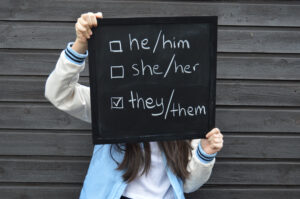 In addition to equipping practitioners to build knowledge, skills and awareness, there are opportunities for improving organizational inclusion. Organizations can communicate that they are a welcoming safe space equipped to address the need of LGBTQ youth and families through careful consideration of their policies, practices, and by listening to the communities they serve.
In addition to equipping practitioners to build knowledge, skills and awareness, there are opportunities for improving organizational inclusion. Organizations can communicate that they are a welcoming safe space equipped to address the need of LGBTQ youth and families through careful consideration of their policies, practices, and by listening to the communities they serve.
The National SOGIE Center (https://sogiecenter.org/ ) offers model policies, guidance on data collection, and resources and trainings to enhance organizational practice.
Advocates for Youth (https://www.advocatesforyouth.org/ ) works alongside youth working for justice, sexual health, and rights. They developed a Creating Safe Spaces Toolkit (https://www.advocatesforyouth.org/wp-content/uploads/2020/11/Creating-Safer-Spaces-Toolkit-Nov-13.pdf) that shares youth leader perspectives on affirming spaces, organizational checklists, model policies and other resources so that organizations can reflect on their practices and consider change.
Best and Evidence-Based Practices
There is significant research that stresses the importance of family acceptance for LGBTQ+ youth in fostering resilience, enhancing wellbeing, and in significantly reducing the risk of self-harm or death by suicide. Family support and strengthening programming can play a critical role in facilitating family acceptance that is known to be such a positive game changer in the lives of LGBTQ+ youth.4
The National Quality Improvement Center on Tailored Services, Placement Stability, and Permanency for Lesbian, Gay, Bisexual, Transgender, Questioning, and Two-Spirit Children and Youth in Foster Care (QIC- LGBTQ2S) was established as a 5-year grant, in collaboration with the Children’s Bureau to develop, integrate, and sustain best practices and programs that improve outcomes for children and youth in foster care with diverse sexual orientations, gender identities, and gender expressions (SOGIE). The resources they compiled are summarized on a Children’s Bureau webpage (https://www.acf.hhs.gov/cb/lgbtqia2s-resources). The resources are housed at the National SOGIE Center website at the University of Connecticut. Implementation sites around the country established these resources and practices:

- AFFIRM Youth: an evidence-based, eight module, manualized coping skills training intervention focused on reducing mental health issues and behavioral risks experienced by LGBTQ+ populations.
- AFFIRM Caregiver is an evidence-informed, seven session, manualized intervention to enhance affirmative parenting practices that promote the safety and wellbeing of LGBTQ+ youth.
- The Family Acceptance Project conducted research establishing the difference that parents and other family members of LGBTQ+ youth make in their child’s health, and identified supportive behaviors that can promote youth’s health and well-being. Their research focused on diverse families including those who were very religious. (Ryan,2021). Their research led to the development of the Family Acceptance Project’s Family Support Model, identified by the American Foundation for Suicide Prevention as a Best Practice for Suicide Prevention, and listed in their Best Practices Registry. The project has developed several research-based resources for practitioners and families.
- The Youth Acceptance Project(YAP) is a clinical model that works with families of LGBTQ+ youth to address their fears and worries related to their LGBTQ+ child and help the family learn new and supportive behaviors to improve their youth’s well-being.
- Journey Ahead is a multi-session intervention for young people who identify as LGBTQ+. The program was created to be implemented with youth experiencing multiple life stressors or systems involvement. The program has a special focus on the intersection of race, ethnicity, and LGBTQ+ identity. Journey ahead can be delivered in-person or virtually. Virtual implementation typically spans six weeks.
More information and additional resources are available at the SOGIE Center (https://sogiecenter.org/programs/) The Center is a collaborative of multiple organizations that work to improve the lives of children and youth with diverse Sexual Orientation, Gender Identify, and Expressions (SOGIE) involved in systems of care.
Additional Resources
The notation after a resource notes the intended audience or focus of the resource: Y = LGBTQ+ Youth; F=Families/Caregivers; T= transgender adults and youth; A=LGBTQ+ Adults; P= Practitioners; O=Concerns organizational practice or systems level initiatives
American Academy of Pediatrics:
- Coming Out: Information for Parents of LGBTQ Teens https://www.healthychildren.org/English/ages-stages/teen/dating-sex/Pages/Four-Stages-of-Coming-Out.aspx (F)
- Gender-Diverse & Transgender Children https://www.healthychildren.org/English/ages-stages/gradeschool/Pages/Gender-Diverse-Transgender-Children.aspx (Y, F)
American Psychological Association:
- LGBTQ Youth Resources Page, American Psychological Association: https://www.apa.org/pi/lgbt/programs/safe-supportive/lgbt (O, Y, F)
- “Understanding Sexual Orientation and Homosexuality” American Psychological Association https://www.apa.org/topics/lgbtq/orientation (available in multiple languages) (F, A, P)
- “Understanding transgender people, gender identity and gender expression” American Psychological Association https://www.apa.org/topics/lgbtq/transgender-people-gender-identity-gender-expression (available in multiple languages) (T, A, F)
Asking about SOGIE: Matarese, M., Weeks, A., Fullenkamp, J., Greeno, E., Betsinger, A., Hammond, P. (2022). System-Wide SOGIE Data Collection with Michigan Department of Health and Human Services, Detroit, MI. The Institute for Innovation & Implementation, University of Maryland School of Social Work. Retrieved from https://sogiecenter.org/wp-content/uploads/2023/04/Asking-About-SOGIE-Pilot-Implementation-Guide.pdf (O)
Center for Excellence for LGBTQ+ Behavioral Health Equity – offers training, technical assistance and resources aimed at supporting Behavioral Health practitioners in supporting the population of people identifying as lesbian, gay, bisexual, transgender, queer, questioning, intersex, two-spirit, and other diverse sexual orientations, gender identities, and expressions. https://lgbtqequity.org/ (P, O)
Human Rights Campaign Foundation: A Resource for Black Families, Family Members, and Caregivers of Black Transgender, Non-Binary, And LGB Youth, authored by Kamela Heyward-Rotimi. Published on February 15, 2023. https://hrc-prod-requests.s3-us-west-2.amazonaws.com/Black-Families-and-Caregivers-021523.pdf. (F,P)
Lesbian, Gay, Bisexual, and Transgender Health, Centers for Disease Control and Prevention https://www.cdc.gov/lgbthealth/index.htm Information and resources for youth and adults. (F, Y, T, A, P)
PFLAG – an organization dedicated to supporting LGBTQ+ people and those who love them. In-person and virtual support, publications, and information. https://pflag.org/find-resources/ (F, Y, A)
Transgender Law Center – the largest trans-led organization in the US. They engage in strategies to “keep transgender people alive, thriving, and fighting for liberation.” Has information and resources. https://transgenderlawcenter.org/ (T, P, F)
Endnotes
1“Key Terms and Concepts,” Federal Interagency Working Group on Youth Programs, accessed August 31, 2023, https://youth.gov/youth-topics/lgbtq-youth/key-terms-and-concepts.
2“LGBT Youth Population in the United States,” Williams Institute, September 2020, https://williamsinstitute.law.ucla.edu/publications/lgbt-parenting-us/
3“How Many Same-Sex Couples in the US Are Raising Children?” Williams Institute, July 2018, https://williamsinstitute.law.ucla.edu/publications/lgbt-parenting-us/.
4Caitlin Ryan, “Helping Diverse Families Learn to Support Their LGBTQ Children to Prevent Health and Mental Health Risks and Promote Well-Being,” Family Acceptance Project, accessed August 31, 2023, https://lgbtqfamilyacceptance.org/wp-content/uploads/2021/11/FAP-Overview_Helping-Diverse-Families6.pdf.
5Laura Baams, Bianca D.M. Wilson, and Stephen T. Russell, “LGBTQ Youth in Unstable Housing and Foster Care.” Pediatrics 143 (3): e20174211, accessed September 1, 2023, htps://doi.org/10.1542/peds.2017-4211.

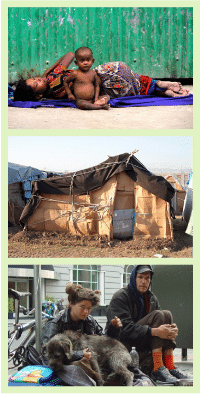
Families experiencing homelessness and housing instability face significant challenges and trauma, including increased exposure to and risk of family and community violence. They move frequently and often double up in overcrowded (and sometimes unsafe) housing with relatives or friends. Others sleep in cars and campgrounds or send their children to stay with relatives or family acquaintances to avoid entering a homeless shelter or becoming involved with public systems like child welfare.
When families experience homelessness, children face a significantly higher risk of chronic or unaddressed health and developmental issues than their peers. Homelessness can also increase the risk of family separation or delay reunification, especially for children in foster care.
To learn more about homelessness and to find resources in your state or community, visit the resources below.
Resources
Child Welfare Information Gateway (https://www.childwelfare.gov/topics/systemwide/service-array/housing/)
Child Welfare Information Gateway’s searchable website is a valuable source of information and resources about housing needs and services for low-income families, including those involved with the child welfare system. Resources, including state and local examples, are grouped by the topics “housing & child welfare” and “housing for relative/kinship caregivers.”
U.S. Interagency Council on Homelessness (USICH) (https://www.usich.gov/goals/families)
USICH coordinates the federal response to homelessness by partnering with 19 Federal agencies, state and local governments, advocates, service providers, and people experiencing homelessness. The USICH’s Opening Doors is the first multi-partner federal strategic plan to prevent and end homelessness. Its Ending Family Homelessness webpage provides an overview of the issue, progress to-date, and links to tools and resources.
U.S. Department of Housing and Urban Development, Homeless Assistance (HUD) (https://www.hudexchange.info/homelessness-assistance/)
The HUD Homeless Assistance web portal lists and provides brief descriptions of a broad range of homeless resources and programs.
Administration for Children and Families (ACF), Office of Early Childhood Development (ECD) (https://www.acf.hhs.gov/ecd/interagency-projects/ece-services-for-homeless-children)
Preventing family and youth homelessness is a key priority of ACF’s Office of Regional Operations, which partners with states and local programs to help vulnerable and low-income youth and families to avoid homelessness, access affordable housing, and provide needed supports.
Administration for Children and Families, Office of Regional Operations(https://www.acf.hhs.gov/oro/priorities/family-youth-homelessness)
Preventing family and youth homelessness is a key priority of ACF’s Office of Regional Operations, which partners with states and local programs to help vulnerable and low-income youth and families to avoid homelessness, access affordable housing, and provide needed supports.
American Institutes for Research (AIR), National Center on Family Homelessness (https://www.air.org/center/national-center-family-homelessness)
The AIR National Center on Family Homelessness webpage provides an overview of the issue, including data snapshots. There is also a link for anyone that is “In Need of Assistance” with a list of links to resources.
National Alliance to End Homelessness (http://www.endhomelessness.org/pages/families_overview)
The websites of these national networks include research and data, as well as resources for activists.
1 U.S. Department of Housing and Urban Development AHAR Part 1. Retrieved from https://www.hudexchange.info/resources/documents/2016-AHAR-Part-1.pdf
A Word About Terminology
The definitions and age ranges of homeless youth, runaway youth, unaccompanied youth, or unaccompanied young adults vary across and within federal agencies and state governments. The Runaway and Homeless Youth Act (RHYA) defines youth experiencing homelessness as individuals who are “not more than 21 years of age…for whom it is not possible to live in a safe environment with a relative and who have no other safe alternative living arrangement.” This definition includes only youth who are unaccompanied by family or caregivers.1
The U.S. Department of Education’s McKinney-Vento Homeless Assistance Act defines homeless children and youth as individuals who lack a fixed, regular and adequate nighttime residence. These children and youth may live in emergency or transitional shelters, motels, camping grounds, cars, parks, abandoned buildings, bus or train stations or be migratory children (they enter the country unaccompanied) living in any of the previously mentioned circumstances.
The following resource provides federal definitions which includes those under 18 or 21 years of age and young adults up to age 25 depending on the source. Visit https://youth.gov/youth-topics/runaway-and-homeless-youth/federal-definitions
Homeless Youth in Our Communities
Consider the Data:

According to a study by Chapin Hall at the University of Chicago, around one in 10 young adults ages 18-25 (an estimated 3.5 million) and at least one in 30 youth ages 13-17 (an estimated 700,000) experienced unaccompanied homelessness within a 12-month period.2 In addition, youth in rural, suburban, and urban counties experience very similar rates of homelessness. In rural counties, 9.2% of young adults reported homelessness while, in urban counties, the prevalence rate was 9.6%.
Groups who are particularly vulnerable and over-represented among youth who experience homelessness include3:
- youth who self-identify as lesbian, gay, bi-sexual, transgender, or queer (LGBTQ+)
- pregnant and parenting youth
- Black, Hispanic, and Native youth
- youth involved with juvenile justice and child welfare systems
- migratory youth
According to the National Center for Homeless Education: (https://nche.ed.gov/wp-content/uploads/2023/12/SY-21-22-EHCY-Data-Summary_FINAL.pdf)
- The number of students who experienced homelessness increased by 79% between school years 2004-05 and 2021-22.
- Students with disabilities and English learners accounted for the largest two reported subgroups of students who experienced homelessness.
Creating Welcoming and Inclusive Communities
Creating a youth-centric safe space is important to engaging youth. According to studies on serving homeless youth it is vital that “administrators understand the youth populations they serve, obtain and use youths’ perspectives, and attempt to create a space that feels safe to their consumers.”5 The National Health Care for the Homeless Council, informed by surveys of homeless youth, suggests the following practices to engaging youth 6:
- Offer low/no cost tangible support, and links to other services.
- Locate services in a safe area, offering a comfortable setting, and clean facilities.
- Provide services with greater flexibility and confidentiality.
- Offer recreational and mentorship opportunities.
To build trusting and respectful helping relationships it is important that staff are warm, open, non-judgmental and can relate to youth’s presenting issues. Those spaces that promote a sense of belonging, independence, and self-efficacy are more likely to be successful in engaging youth experiencing homelessness.
Prevention Strategies and Evidence-Based Programs

Chapin Hall’s Voices of Youth Count Initiative offers a comprehensive review of evaluative evidence on programs and practices that address youth homelessness. In addition, Chapin Hall’s review of programming and services for homeless youth provides key findings that include4:
- Family-based interventions show positive results for behavioral health, but we need better evidence on their effects on housing stability and family connections.
- Providing concrete support like rental assistance and supportive housing programs shows promising results.
- Evaluations should focus on interventions that address well-being, risk behaviors, and show positive results.
For more information visit: Chapin Hall’s Comprehensive Evidence Review of Programs and Practices Addressing Youth Homelessness Can Now Inform Decision Making
Missed Opportunities: Evidence on Interventions for Addressing Youth Homelessness – The eighth in a series of Research-to-Impact briefs by Chapin Hall at the University of Chicago on understanding and addressing youth homelessness.
Additional Resources
Administration for Children and Families
Promising Strategies to End Youth Homelessness https://www.acf.hhs.gov/sites/default/files/documents/fysb/youth_homelessness.pdf
- Fact Sheet, Runaway & Homeless Youth Programs: Family and Youth Services Bureau https://www.acf.hhs.gov/fysb/comms-fact-sheet/about-fysb
- Youth Acceptance Project (YAP): YAP is a clinical model working with families of LGBTQ+ youth to help caregivers learn to support their child’s well-being. https://www.acf.hhs.gov/cb/fact-sheet/youth-acceptance-project
Department of Housing and Urban Development – Homelessness Assistance
Resources for youth service providers and their partners are highlighted on the HUD website. HUD, along with many other federal agencies, manages and funds programs such as local homeless assistance agencies, emergency shelters, food assistance programs, housing counseling, and job training and placement assistance. https://www.hudexchange.info/homelessness-assistance/resources-for-homeless-youth/resources-for-homeless-youth-service-providers/#planning-your-coordinated-community-approach
Homeless Shelter Directory (http://www.homelessshelterdirectory.org/)
Helping the Needy provides a list of homeless shelters by state and city, social service organizations, including soup kitchens and rent assistance programs, and news updates on the latest issues.
National Center for Homeless Education: NCHE operates the U.S. Department of Education’s technical assistance and information center for the federal Education for Homeless Children and Youth (EHCY) Program.
- Providing Wrap around Services Under ARPA Homeless Children and Youth Program: https://nche.ed.gov/wrap-around-services/
- The Educational Rights of Children and Youth Experiencing Homelessness: What Service Providers Need to Know. https://nche.ed.gov/wp-content/uploads/2018/10/service_providers.pdf
National LGBTQIA+ Health Education Center: provides educational programs, training and technical assistance resources, and consultation to health care organizations including health centers with the goal of optimizing quality, cost-effective health care for LGBTQIA+ people. Supportive Housing and Health Services for LGBTQIA+ Youth Experiencing Homelessness: Promising Practices
The National Network for Youth (NN4Y) is dedicated to preventing and eradicating youth homelessness in America. NNY works in communities with youth who have experienced homelessness, service providers, and systems to help accelerate the community’s progress in ending homelessness and human trafficking among young people. The NN4Y Youth-Adult Partnerships Toolkit is designed to guide youth service organizations to becoming better advocates for youth at risk of or experiencing homelessness. https://nn4youth.org/learn/youth-adult-partnerships-toolkit/
The Unaccompanied Children (UC) Program: The UC Program is managed by the Office of Refugee Resettlement (ORR) within the Administration for Children and Families (ACF), an operational division of the U.S. Department of Health and Human Services (HHS). FACT SHEET Unaccompanied Children (UC) Program: https://www.hhs.gov/sites/default/files/uac-program-fact-sheet.pdf
United States Interagency Council on Homelessness (USICH) was created by the McKinney-Vento Act in 1987 to coordinate the federal government’s collaborative response to homelessness. The USICH works in partnership with 19 federal agencies and a national network of state and local affiliates to prevent and end homelessness in America. https://www.usich.gov/
Endnotes
1“Federal Definitions,” Youth.Gov, accessed March 13, 2024, https://youth.gov/youth-topics/runaway-and-homeless-youth/federal-definitions#:~:text=The%20term%20%22homeless%20children%20and,a)(1))%3B%20and.
2Matthew Morton, Amy Dworsky, Gina Samuels, “One in 10 Young Adults Experience Homelessness During One Year,” accessed March 13, 2024, https://www.chapinhall.org/research/one-in-10-young-adults-experience-homelessness-during-one-year/.
3“Youth Homelessness Overview,” National Conference of State Legislatures, last modified March 29, 2023, accessed February 28, 2024, https://www.ncsl.org/human-services/youth-homelessness-overview.
4“Voices of Youth Count: Understanding and Ending Youth Homelessness,” Chapin Hall, accessed March 13, 2024, https://www.chapinhall.org/project/voices-of-youth-count/.
5“Engaging Youth Experiencing Homelessness: Core Practices and Services,” National Health Care for the Homeless Council, last modified Jan 2016, accessed March 8, 2024, https://nhchc.org/wp-content/uploads/2019/08/engaging-youth-experiencing-homelessness.pdf.
6National Health Care for the Homeless Council, “Engaging Youth Experiencing Homelessness.”
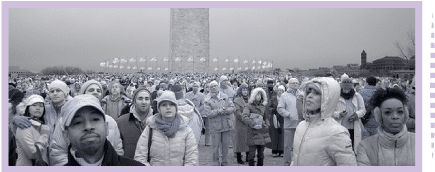
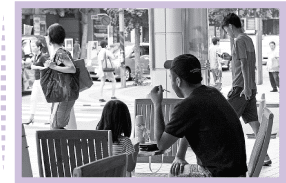
Resources
FRIENDS NC Website – ACES in Prevention (click here)
National Center for Biotechnology Information, U.S. National Library of Medicine (http://www.ncbi.nlm.nih.gov/books/NBK64896/ and http://www.ncbi.nlm.nih.gov/books/NBK64895/)
National Center for Biotechnology Information, U.S. National Library of Medicine: Substance Abuse Treatment for Persons with Child Abuse and Neglect Issues, Comprehensive Treatment for Adult Survivors of Child Abuse and Neglect, and Screening and Assessing Adults For Childhood Abuse and Neglect.
1. Australian Institute of Family Studies: Effects of child abuse and neglect for adult survivors (2014). Retrieved from http://www.aifs.gov.au/cfca/pubs/factsheets/a146123/index.html
Everyone in a setting benefits from a culturally diverse community of people, in which respect and cultural humility is practiced. This diversity allows for learning new ideas and new practices and enables individuals to better operate in a diverse world. People who live in isolation, or who are surrounded only by homogeneous people will miss the opportunities that learning from other cultures can bring to children, families, and communities.
AVOIDING THE SINGLE STORY
When people grow up in homogeneous communities, they may only have a single image of other people. Author, teacher, and international speaker Chimamanda Ngozi Adichie describes this as labeling people with a single story. This involves knowing very little about a person’s culture but thinking that one understands the other person and their experiences completely. No one has a “single story” and can be so easily understood. It is important to practice enough cultural humility to seek to learn more than a single thing or only a few things about another group of people.
You will better understand this single story concept by watching Ms. Adichie’s Ted Talk at the link below:
This talk incorporates examples from America, Nigeria, and Mexico to describe the problem in using a single story to work with other people.
PREVENTION
EXTERNAL RESOURCES:
The following resources are categorized by special population and include both longstanding national non-profit organizations and federal government offices that offer information which may be of interest to the CBCAP community.
Latino and Hispanic Resources
(**Provide direct services in communities.)
http://www.aspira.org/ – **ASPIRA works at the grass-roots level to provide programs that encourage Hispanic students to stay in school, prepare them to succeed in the educational arena, develop their leadership skills, and to serve their community. It is organized in eight states and Puerto Rico and has extensive national presence through its partnerships with hundreds of regional, state and local education Community Based Organizations.
http://www.catholiccharitiesusa.org/ –**The mission of Catholic Charities agencies is to provide service to people in need, to advocate for justice in social structures, and to call the entire church and other people of good will to do the same. If you search online “Catholic Charities Latino Service” a range of state and regional affiliate organizations will be listed that have large Latino and Hispanic service populations.
https://lulac.org/– The Mission of the League of United Latin American Citizens is to advance the economic condition, educational attainment, political influence, housing, health and civil rights of the Hispanic population of the United States.
http://www.lutheranservices.org/ – **A national faith based organization that provides health and social services (i.e., housing and substance abuse prevention/treatment) in hard to serve communities. They provide services to refugee, immigrant, and migrant families, many of whom are Latinos.
https://www.naprhsw.com/ – National Association of Puerto Rican and Hispanic Social Workers (APRHSW) was created to organize Social Workers and other Human Service professionals to strengthen, develop and improve the resources and services that meet the needs of Puerto Rican/Hispanic families.
http://www.chci.org/ – The Congressional Hispanic Caucus Institute (CHCI) is a nonpartisan leadership development organization rooted in the same three mission cornerstones laid by its founders: Educate, Empower, and Connect. CHCI promotes education attainment and college access, providing unmatched career development experience, and offering award-winning leadership programs that connect program participants to a network of U.S. leaders.
African Americans and Other Ethnicities
http://www.youtube.com/watch?v=SaSHLbS1V4w – A Video: Understanding Cultural Humility: People, Principles and Practices (2012) A 30-minute documentary by San Francisco State professor Vivian Chávez that mixes poetry with music, interviews, archival footage, and images of community, nature and dance to explain what Cultural Humility is and why we need it.
PBS – Journey to Peace – A program developed by Jamila White, Douglas Spiro, and Cole McGee that includes a documentary film. The website includes clips of videos from conversations with Dr. John Hope Franklin and Archbishop Desmond Tutu and 21 students. The students are from the United States, South Africa and the Republic of Senegal. Clips of student conversations revolve around interracial relationships, international stereotypes, intergenerational issues and using art to build bridges. The documentary was shown on PBS in 2001 and is available for order, but the website offers a number of rich resources which are readily available.
American Indian and Alaska Native Resources
http://www.collegefund.org/ – Native American College Fund: The American Indian College Fund’s motto is educating the mind and spirit. We achieve this by providing Native students with scholarships and providing financial support for the nation’s 34 accredited tribal colleges and universities, which incorporate American Indian culture and language into their curriculum to honor our students’ heritage and Native identity.
http://www.bia.gov/ – U.S. Bureau of Indian Affairs: Established in 1824, IA currently provides services (directly or through contracts, grants, or compacts) to approximately 1.9 million American Indians and Alaska Natives. There are 566 federally recognized American Indian tribes and Alaska Natives in the United States. Bureau of Indian Affairs (BIA) is responsible for the administration and management of 55 million surface acres and 57 million acres of subsurface minerals estates held in trust by the United States for American Indian, Indian tribes, and Alaska Natives. Bureau of Indian Education (BIE) provides education services to approximately 42,000 Indian students.
http://www.ihs.gov/ – U.S. Indian Health Services: The IHS is the principal federal health care provider and health advocate for Indian people and its goal is to raise their health status to the highest possible level. The IHS provides a comprehensive health service delivery system for approximately 1.9 million American Indians and Alaska Natives who belong to 566 federally recognized tribes.
http://www.acf.hhs.gov/initiatives-priorities/tribal – U.S. Administration for Children and Families’ Tribal and Native American Resources: ACF is committed to working with Tribal Governments in building a strong partnership regarding our programs and the services they provide. ACF provides the largest amount of funding to Native Americans located throughout the nation and the territories of Guam, American Samoa and the Northern Marianna Islands outside of the funds provided by the Indian Health Service. Out of a budget of almost $50 Billion, ACF awards on the average $647 Million to Native Americans from the following programs Head Start, Child Care, TANF, LIHEAP, Child Support and the Administration for Native Americans to name a few.
http://www.justice.gov/otj/ – Office of Tribal Justice, Department of Justice: The website addresses policies and initiatives for parties interested in Indian affairs ranging from federal criminal law, to methamphetamine use, civil rights, gaming, and related information sharing.
http://www.bie.edu/index.htm – Bureau of Indian Education
http://www.ncai.org/ – National Congress of American Indians: Founded in 1944, it is the oldest, largest, and most representative American Indian and Alaskan Native organization serving the broad interests of tribal governments and communities. Updates posted regularly share new initiatives, issues in the media, and opportunities for native youth.
Refugees
http://www.refugees.org/ – The U.S. Committee for Refugees and Immigrants (USCRI) has been serving uprooted people, regardless of their nationality, race, ideology, or social group. They provide tools and opportunities for self-sufficiency to refugees and immigrants nationwide, fight refugee warehousing around the world, serve victims of human trafficking, and protect the rights of unaccompanied immigrant children.
https://www.acf.hhs.gov/orr – The Office of Refugee Resettlement (ORR) provides new populations with opportunities to maximize their potential in the United States, linking people in need to critical resources to assist them in becoming integrated members of American society.
Disabilities
https://www.dol.gov/agencies/odep – This is the federal government website for information on disability programs and services nationwide. You can find thousands of resources on topics, such as how to apply for Social Security disability benefits, find a job and pay for accessible housing, to name just a few. Let Disability.gov guide you to the information you want.
CDAP Index – The Center for Disability and Aging Policy advises and supports the ACL Administrator and Principal Deputy Administrator in developing effective Federal policies and programs to address the needs of individuals with disabilities and the aging of the nation’s population. The Center supports, plans, coordinates and oversees the implementation of policies, programs and special initiatives designed to overcome barriers that prevent older Americans and persons with disabilities from fully participating and contributing in an inclusive community life.
http://www.ada.gov/ – The ADA is one of America’s most comprehensive pieces of civil rights legislation that prohibits discrimination and guarantees that people with disabilities have the same opportunities as everyone else to participate in the mainstream of American life — to enjoy employment opportunities, to purchase goods and services, and to participate in State and local government programs and services.
Fatherhood
http://www.fatherhood.gov/about-us – The National Responsible Fatherhood Clearinghouse is an Office of Family Assistance (OFA) funded national resource for fathers, practitioners, programs/Federal grantees, states, and the public at-large who are serving or interested in supporting strong fathers and families.
Military Families
Military OneSource – Offers help with parenting and child care, education, relocation, financial and legal concerns, and everyday issues.
National Military Family Association – Provides education and information regarding rights, benefits, and services for military families.
Courage To Care –Provides fact sheets on timely health topics relevant to military life developed by military health experts at Uniformed Services University of the Health Sciences.
Military Child Education Coalition – Helps military children cope with being transferred from school to school around the world.
NACCRRA – Provides child care resources and referral agencies that help parents find quality child care.
For more information on how to access FRIENDS technical assistance on this issue, Cultural Responsiveness, CBCAP State Leads may contact your FRIENDS T/TA coordinator.
